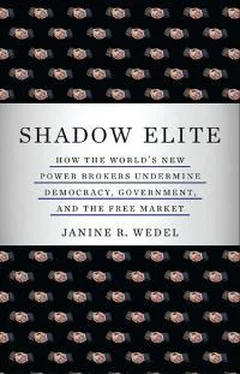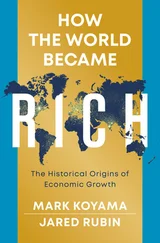As self-sustaining teams with their own agendas, flex nets cut through bureaucracy, connect entities, and streamline decision making. This efficiency can make them attractive to an administration and the public, as was the Neocon core to the Bush II administration, especially in the president’s first term. The sense of mission, perseverance, and ready strategy for advancing its goals that can make it an asset to an administration also means it can become a liability if the policies turn out to be unpopular, as did the Neocons’. And while members of a flex net serve “at the pleasure of the president,” as does anyone else, they go on and on trying to achieve their goals. They differ from the “Wise Men” of the past such as the influential advisers who refashioned American foreign policy at the end of World War II and John F. Kennedy’s “Best and Brightest” who executed the Vietnam War in the 1960s. These men were mainly instruments of the presidents whose policies they pursued.
Three, juggling roles and representations .Flexians perform interacting or ambiguous roles to maximize their influence and amass resources. Their repertoire of roles, each with something to offer, affords them more flexibility to wield influence in and across organizations than they would have if they were confined to one role. The juggling of flexians cannot be equated with the “revolving door,” in which people move serially between government and the private sector. The revolving door acquired its meaning in an age when the lobbyist and the power holder were the brick and mortar of the influence game. Their roles were defined and confined. The new breed of players is more elastic in its engagement. In the United States, for example, where players in policy and governing are just as or more likely to be outside formal (federal) government (in, say, consulting firms, think tanks, NGOs, and quasi-government organizations) than in it, players can occupy more roles than in the past and more easily structure their overlap to create a coincidence of interests. The ambiguity inherent in the interconnectedness of flexians’ roles that can be kept separate, merged, or played off against each other at will yields not only flexibility but deniability. Ambiguity is not a mere byproduct; it is a defense. It enables flexians to play different sets of constraints off each other, skirting accountability in one venue by claiming they were operating in another. They need not necessarily break the rules; they merely shift around them. In this way, flexians defy scrutiny and public accountability while advancing their own agendas.
The corollary to flexians’ juggling roles and representations is that members of a flex net form a resource pool—the corresponding third feature of flex nets. The influence of a flex net derives in part from its members’ effort to amass and coordinate both material and interpersonal resources. As members parlay their roles and standing into influence opportunities by placing themselves in positions and venues relevant to their goals, the network as a whole can wield far more influence than an individual on his own. The Neocon core, for instance, is an example of how a ready-made network of players with its own private agendas can straddle a state-private seesaw to: prescribe and help coordinate government policies of monumental import and impact; sell them to government officials, legislators, the media, and the public; help implement them; and continue this strategy, both to justify what they have done and to influence policies that follow from the course taken. While highly effective, such a group is elusive and more difficult to hold to account than lobbyists, interest groups, and the like. 26
Four, relaxing rules at the interstices of official and private institutions .As flexians inhabit and shift among overlapping roles, they relax rules. They achieve their goals in part by finessing, circumventing, or rewriting both bureaucracy’s rules of accountability and businesses’ codes of competition, thus helping to create many of the choices and structural positions available to them. In (re)organizing relations among official and private institutions, flexians fundamentally change the qualities of each, fashion a new fusion, and give birth to an altogether new beast.
Collectively, members of a flex net help create a hybrid habitat— their corresponding fourth feature. A flex net’s strength lies in its coordinated ability to reorganize governing processes and bureaucracies to suit the group’s purposes. Members of these groups both use and supplant government, as well as establish might-be-official, might-be-unofficial practices to bypass it altogether. Poised to work closely with executive authorities, flex nets eschew legislative and judicial branches of government that may interfere with their activities. The Neocon core did all of these things to help take the United States to war in Iraq. As flex nets infuse governing with their supple, personalized, private-official networks, they transmogrify their environment, whether temporarily or more lastingly. While these groups might call to mind old notions such as conflict of interest, they illustrate why such labels no longer suffice. As a Washington observer sympathetic to the neoconservatives’ aims told me, “There is no conflict of interest, because they define the interest.”

THE RISE OF FLEXIANS and flex nets (and almost flexians and flex nets) illustrates the evolution of the American system of governing. In the old days, when an individual handed someone his business card, there was less doubt about who he represented and what activities he was engaged in. On a collective level, networks within government and political elites that undermine democracy are, of course, nothing new. One study of American political power from the Civil War to the New Deal, for instance, depicts the web of ties among government officials and the threat that those connections pose to the notion of democratic government. Most famously, a half century ago, in his treatise The Power Elite , sociologist C. Wright Mills described the interlocking group of government officials, military leaders, and corporate executives at the pinnacle of the nation’s establishment, who, he argued, effectively “controlled” major political and social decision making. The rise of flex activity augurs for an even less democratic era. Rather than climbing Mills’s pyramid of the political, military, and business establishment, members of flex nets wield influence by forging coincidences of interest among an array of roles across organizations, whose boundaries and purposes often blend. Emergent forms of governing, power, and influence thus play out not in formal organizations or among stable elites, but in social networks that operate within and among organizations at the nexus of official and private power. The players in this system are less stable, less visible, and more global in reach than their forebears. Flex nets are a paradox: more amorphous and less transparent than conventional lobbies and interest groups, yet more coherent and less accountable, as one political scientist has observed. While many activities of flexians, and certainly their views, are public, the full array of their machinations is almost always difficult to detect. And the mechanisms of democratic input and control that could check them are just as difficult to discern. 27
The new breed of players—today’s shadow elite—are as elusive as they are ubiquitous. Agilely evading questions about who funds them, who they work for, or where their loyalties lie, individual flexians as well as those in flex nets benefit from the dust cloud of ambiguity and deniability they leave behind. They are not inherently unethical, in fact they sometimes do good and much-needed works, but they are subject to no greater oversight than their own consciences and the social pressure of their own networks. Their potential “corruption” is so interrelated that mechanisms that might curb their activities have yet to be invented. While charges of corruption may not stick, their activities are potentially more pernicious. They dilute effective monitoring, criticism, and consideration of alternative policies and, wherever they operate, have the potential to reshape governing. The inevitable result is that states, international organizations, companies, and NGOs face a new responsibility of grave proportions: investigating the track records, agendas, sponsors, and allegiances of the movers and shakers who work with them.
Читать дальше













